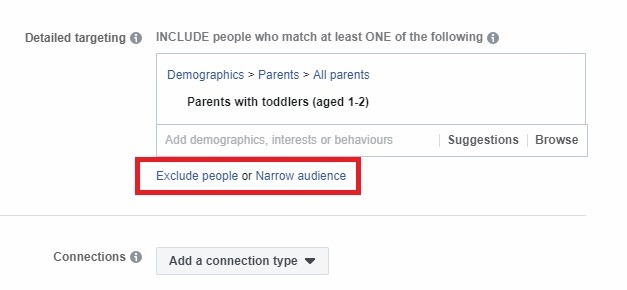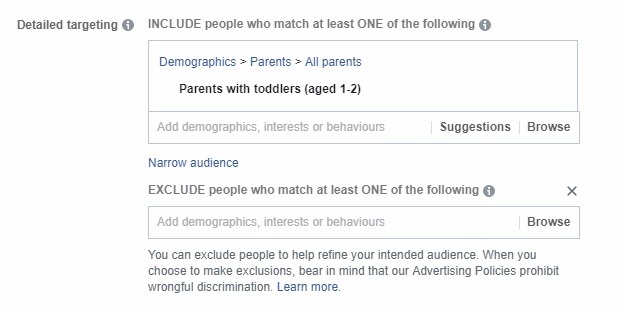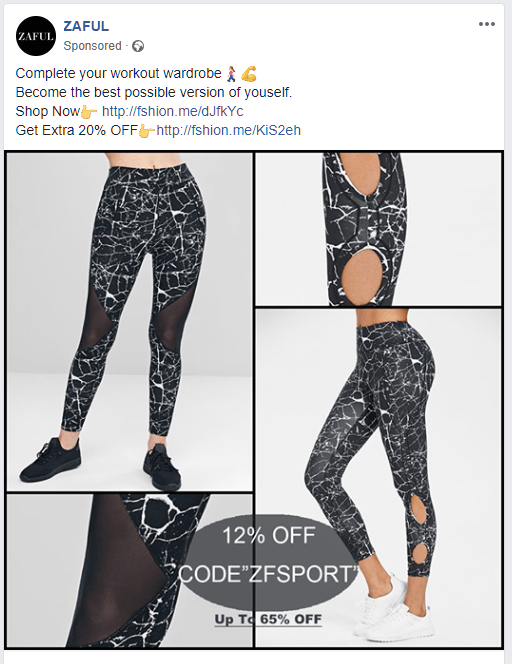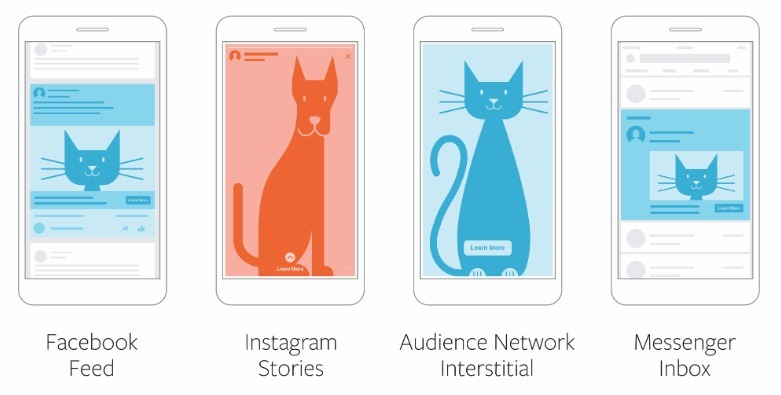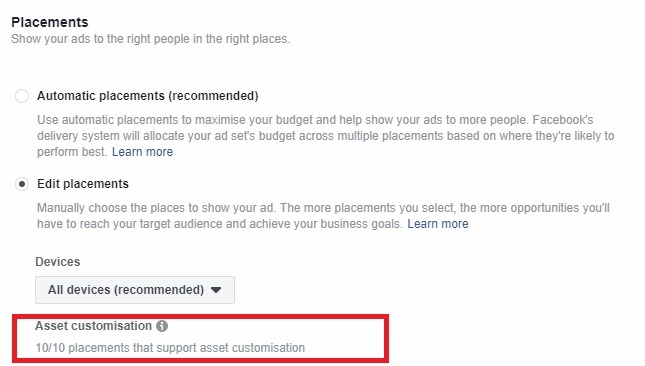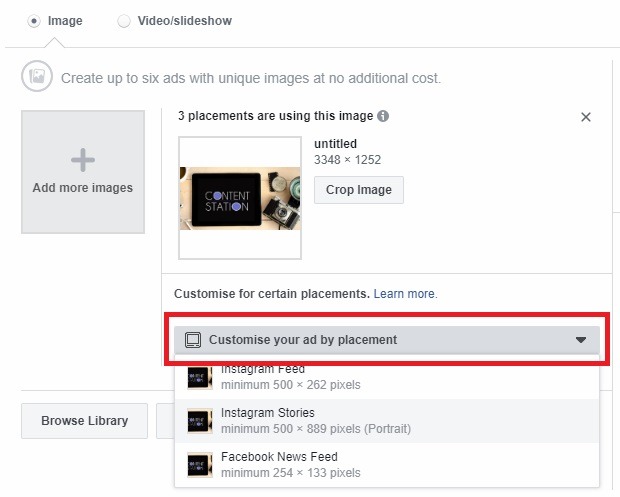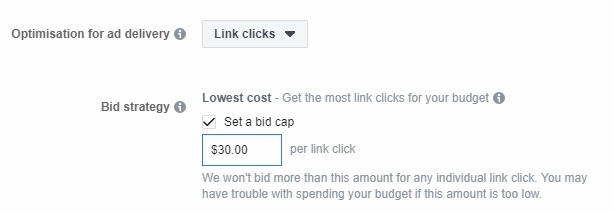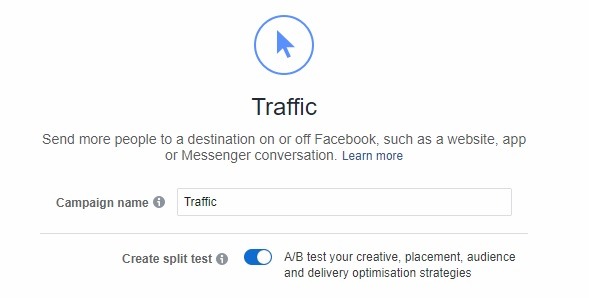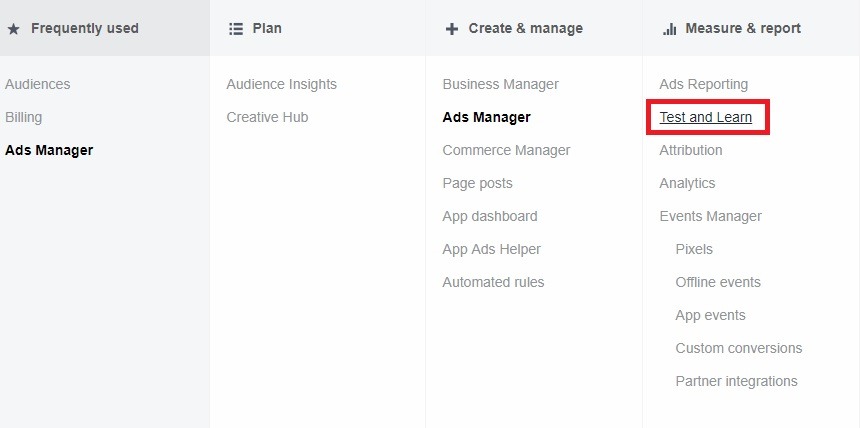If you want to improve the performance of your Facebook ads, you’ve come to the right place!
Improving your Facebook ad performance means higher CTRs, conversions and reach for your buck, keeping your ROIs on point.
So where is the best place to start?
This week we will give you our top tips for improving the performance of your Facebook campaigns. We’ve divided them into newbie tips and advanced hacks to ensure we can help you boost your Facebook results, no matter how experienced you are.
If you want to jump ahead to Facebook performance tips for more advanced marketers, click here.
Otherwise, sit back, grab that coffee and get ready for the ultimate guide to Facebook ad performance.
6 Steps to Better Facebook Performance for Newbies
Step 1: Make Sure You’re Using the Right Facebook Ads for eCommerce
Are you using the right Facebook ads? One of the most significant performance problems newbie eCommerce Facebook marketers face can be attributed to spending money on the wrong kinds of ads. When it comes to eCommerce, there are 9 types of Facebook ads you should be experimenting with. These are:
- Facebook Dynamic Ads
- Carousel Ads
- Facebook Collection Ads
- Video Ads
- Offer Ads
- Domain Ads
- Messenger Ads
- Instant Experience Ads
- Lead Ads
To read more about why these Facebook ads can bring in big eCommerce sales, head over to our Guide to eCommerce Facebook Ads.
Step 2: Make Sure You’re Targeting the Right Audience Demographics
Once you are testing the right ads, it’s time to check your targeting. Facebook audience demographics can play a big role in improving Facebook ad performance. If you’re targeting women’s yoga pants to men, your CTRs will clearly be abysmal.
The idea here would be to target smaller segments to ensure your ads are highly targeted and thus enjoying better ad performance. This includes targeting based on demographics such as specific locations, ages, genders, behaviors and placement.
Step 3: Improve CTRs with Exclusions
Another key, but often overlooked, targeting component to improve Facebook performance is audience exclusions. These allow you to set parameters of audiences you don’t want to reach with your campaigns.
For example, you can improve CTRs of your awareness campaigns by setting a rule to exclude people who have already been in contact with your brand.
Pro Tip: Have you excluded previous converters? Improve performance by ensuring you aren’t targeting previous shoppers, which can tank your CTRs. Instead, move them up the funnel to your remarketing campaigns targeting previous shoppers that also then exclude those who converted from the ad.
Step 4: Look for Ways to Incorporate Video Ads into Campaigns
If you’re not investing in video content for Facebook campaigns, then yes – you’re missing out. Integrating video into your Facebook marketing can have dramatic effects on your performance. In a Hubspot case study, they proved that video generated 20% more clicks than the image used for the same ad and targeting. In another study, our merchant was able to reach 13 million Facebook views with a simple smartphone video.
Due to a lot of misconceptions about expense and ROIs, video content is often the last ad type that newbie eCommerce marketers use. But if you want to turn your Facebook marketing up a notch, it’s time to take the leap. Here are some guides to get you started:
- How to Create the Perfect Facebook Video Ad
- Global List of Video Production Services, Marketplaces and Platforms for eCommerce
- 7 Small Businesses Killing It with Video Content
- 14 Places to Find Royalty-Free Background Music for Marketing Videos
Step 5: Are Your CTAs and Offers Enticing?
Does your CTA or offer appeal to the audience segment you’re targeting and does it match your ad objective? Every ad needs a solid objective, a CTA and awesome copy to back it up. Let’s say your ad objective is sales, but your ad is designed (imagery and CTAs) for brand awareness; your ROIs are going to suffer. Here are some CTA tips to get you started:
- Highlight the benefits, not just the product
- Keep to the point
- Include an action word
- Use negative words
This is something that some of our top 7- and 8-figure merchants know how to do. GearBunch, an online legging store that does over $5 million in revenue a year, gets 80% of their new customers from Facebook ads. Sure, targeting plays a huge role, but so does your copy.
Step 6: Do an Ad Element Audit
It’s not just your objectives and CTAs you want to test! To increase Facebook performance, you want to test each element of an ad to find your converting superstar. This includes variations on body text, images/video, headlines, link text, buttons, targeting, CTAs and more.
Here is an audit checklist that includes all our newbie tips mentioned in this post, to get you started on creating better-performing ads:
- Audit and fine-tune your targeting
- Test various videos and images
- Try ad copy and CTA variations
Once you’ve done this, you are ready for more expert Facebook performance tips, hacks and strategies. Let’s jump in!
Facebook Performance Tips for Advanced Marketers
1. Test the “Snap, Benefit, Action” Copy Strategy
Before we get into the technical side, let’s look at your copy. Why? Because it’s the first step to pro Facebook performance to upgrade your ad copy to expert level. The “snap, benefit, action” copy strategy, or SBA for short, is a three-stage copy strategy to help you improve CTRs and drive more targeted traffic to your store. I first heard the term from Facebook influencer Charlie Lawrance, and it’s a great way to remember this tried-and-tested winning ad copy structure for colder, newer audiences. Let’s break it down.
Snap: This refers to the first line of copy in your ad, that’s aim is to grab attention quickly. An example of “snap” copy on a new shopper promotional ad could be: “Get 10% off your first [product] purchase when using NEW10 promo code.”
Benefit: This refers to the next line of copy, where, you guessed it, you highlight what the potential shopper – who you are specifically targeting with that ad – will gain from clicking your ad or buying your product. Benefit text may go a little something like this: “Our yoga leggings are 100% organic cotton and come in custom designs to suit any taste.”
Action: Lastly, “action” is your CTA. What should the person seeing your ad do and why should they do it? “Click ‘Shop Now’ for more savings!”
Here are some examples of SBA in action in various eCommerce Facebook ad types.
Of course, there are always exceptions to the rule; the trick is to find approaches that work for your specific brand and audience.
2. Use Testimonial and Reminder Copy to Boost Urgency and Trust
Another way to boost the overall performance of your Facebook campaign copy is to take the power of Facebook remarketing and word-of-mouth marketing for awesome results. There are two very effective ways to do this:
Word-of-Mouth Ad Copy: Taking testimonials from satisfied shoppers and incorporating comments into your ad copy can have great results when you target people already in the second stage of the buying process – they know your store and products and have visited your store. This is effective as it gives extra confidence and trust to your brand, which we all know is key to getting new shoppers to convert. You can read more about how to use word-of-mouth marketing to boost eCommerce sales here.
Urgency Reminder Copy: A simple way to create urgency when remarketing traffic that hasn’t bought yet is with reminder ads. This can be in the form of a deal or promotion they already know about that is expiring, or a product they showed interest in (cart abandonment) that there is only x amount of left.
Additionally, incorporating these types of remarketing strategies into your Facebook Messenger campaigns lets you engage directly with these warmer audiences. New to Facebook Messenger ads? Then head over to our Essential Basics to Selling with Facebook Messenger guide.
3. Take Remarketing to a Whole New Level with a 3-Stage Strategy
Are you segmenting down your remarketing campaigns into buying intent? You should! Why? Because splitting your Facebook remarketing campaigns into three stages can be very effective. It’s not just your awareness and new shopper campaigns that should be divided into cold, warm and hot.
If you want to be effective and push remarketing conversions, then dividing your remarketing audiences into stages is key. I am not talking here about segmentation based on traffic behavior, although that is super important. I am talking about further segmentation that can help you zero in on that previous traffic and turn it into sales.
The idea here is to push traffic down the remarketing funnel, as you would with other strategies. Here’s a breakdown of three levels you could be breaking down your campaigns into.
Stage 1: Awareness Remarketing Campaigns
These are campaigns that you set up to target that traffic that has visited your store only once or twice and still needs engaging, non-hard sell elements to further get to know your brandand build trust. Or it can be remarketing store visitors from an extended period of time ago that are now ‘cold.’
Stage 2: Warm Remarketing Campaigns
The next level is warm remarketing campaigns. Campaigns that are targeting repeat traffic that has clicked through to your site from the previous stage of the campaign. Here you could use promotions (product-specific), dynamic product ads or testimonials to keep their interest.
Stage 3: Hot Remarketing Campaigns
Hot remarketing campaigns will target those potential shoppers who have recently visited your store multiple times and were engaged with the first two stages. From urgency campaigns to cart abandonment remarketing dynamic product ads, the possibilities for making hot traffic convert is high.
And remember, Facebook remarketing plays a huge role in a successful cross-channel PPC strategy. You can learn more about how to integrate Facebook and Google like a pro from this handy guide.
4. Take Advantage of Placement Asset Customization Tool to Stay Relevant
If you want to tweak ad creatives within your campaign to improve CTRs and sales opportunities depending on the channel, then Facebook’s Placement Asset tool is super helpful. Be aware that this tool isn’t available in every country yet, but it’s worth looking out for even if it isn’t.
This tool allows you to use different assets such as video or image for the same ad, depending on the placement of the ad. Let’s say you want to run an ad – for a specific promotion – that is placed on Instagram and Facebook. You could use different visuals for each placement platform for the same ad.
By being able to alter or edit cropping, aspect ratio, video length and headline or text length, you can ensure that your ads are therefore optimized for each placement (which is likely to result in a higher chance of engagement) without needing to create a whole new ad for each.
Currently, you can use this feature for Facebook and Instagram feeds, Instagram Stories and Audience Network native and/or video placement.
5. Use Lifetime Value Lookalikes to Reach Highly Targeted Potential Shoppers
Lifetime Value Lookalikes are a must-use strategy for eCommerce entrepreneurs looking to become Facebook marketing pros. These allow you to create a custom audience of new potential shoppers based on the characteristics, interests and demographics of your store’s current big or frequent spenders. In short, it allows you to find more potential shoppers who match audiences with a good lifetime value.
You can find a step-by-step guide to setting up this kind of performance-driven custom audience here.
Pro Tip: Looking for more Lookalike Audiences to improve Facebook campaign performance? Why not try event-based Lookalikes or Facebook Value Optimization.
6. Switch to Lowest-Cost Cap Bidding to Peak Performance
Facebook ad sets are set by default at the lowest cost, ensuring Facebook knows you want to get the lowest cost possible per result. However, if you change this default to lowest-cost bidding, you are able to ensure your maximum budget isn’t exceeded and your profits aren’t compromised while increasing ad distribution. The key to using this hack successfully, though, is knowing your target cost per optimization.
For example:
Let’s say you are running a Facebook remarketing campaign for a t-shirt (that costs $20) from your online clothing store. Additionally, you are using a conversion objective and have a target cost per conversion of $2. You would then set a bid cap of $10 – four times the value of your target acquisition cost, and a daily budget five times that of your bid cap – $50 per day with the aim to get 50 conversions in a week.
7. Recycle Your Best Performers
If you have campaigns that you retired or abandoned in the past, it may be time for them to make a comeback. If at one stage they were winners, that is. Perhaps you have a promotion ad that worked fantastically; you could rerun the promotion or edit it slightly to match a new sale you’re running and unpause the campaign.
Pro Tip: Want to know how to scale a well-performing Facebook ad the right way? This video from Ben Malol takes you through his expert strategy.
8. Using Facebook’s Split Testing Tool to Find Unicorn Campaigns
We know that the key to successful PPC campaigns lies in testing and optimizing. With the help of Facebook’s split testing tool, you can automatically split test every new campaign to ensure your audience targeting, placement, delivery and creatives are optimized to their full potential. This is super handy as it will ensure that you’re getting the best ROIs possible.
The split testing tool is available for traffic, lead generation, conversion, video views, catalog sales, reach, engagements, messages and brand awareness campaign objectives. With this tool, you are able to create multiple ad sets that you can test against each other to find the top performer.
How does Facebook’s split testing feature work?
It divides your audience into random groups with equal auction opportunities and tests different ads with one variable changed at a time. The ad set with the best cost per result wins. After which you will get a notification with the data, which you can then use to help formulate Facebook ad strategies moving forward.
9. Take Advantage of Facebook’s Test and Learn Tool
Another super handy tool for easily ensuring peak Facebook performance is their Test and Learn tool. Unlike the split testing tool, which enables you to split test variables when creating a campaign, the Test and Learn tool will help you evaluate which of your campaigns are bringing you the most sales for your budget.
Measuring brand and conversion lifts, Facebook’s Test and Learn tool will help you determine which campaigns have the lowest cost conversion, the impact of all your Facebook ads, the impact of each campaign on your store brand, and campaign budget evaluation – showing you opportunities to improve budgeting to improve performance.
Conclusion
There you have it, hacks and tips to help you with improving Facebook ad performance and building a solid eCommerce Facebook marketing strategy. To help sum up everything we have covered in this guide, here is a checklist of things to help you improve Facebook ad campaign performance:
- Ensure you’re using the right ad types for eCommerce
- Check that you have set the right objective
- Ask yourself whether you’re targeting the right audience
- Are your budget parameters serving you?
- Review your placements and remove those bringing down your result averages
- How relevant is your ad creative and text to your objective and audience?
- Do you have a snap, benefit and CTA?
And finally, it is worth mentioning that if you’re getting the reach and clicks but not the conversions, there is a big chance the landing page you are sending them to either isn’t optimized or displays messaging irrelevant to the ad. If you want to check (for free) how well your store is doing on this front in relation to 7- and 8-figure stores in your niche, click here.
For more expert tips, head over to our 9 Must-Use Expert Facebook Strategies post and if you have any campaign questions, feel free to post them in the comments below. Our Facebook gurus are standing by!

Nicole is a content writer with over sixteen years experience and flair for storytelling. She runs on a healthy dose of caffeine and enthusiasm. When she's not researching the next content trend or creating business content strategies, she's an avid beachgoer, coffee shop junkie and hangs out on LinkedIn.
Recommended articles
 Facebook Ads for eCommerce: 16 Strategies, Examples & Tips
Facebook Ads for eCommerce: 16 Strategies, Examples & Tips
 How to Build a Winning eCommerce Ads Strategy
How to Build a Winning eCommerce Ads Strategy
 Google Ads for eCommerce: Everything You Need to Know
Google Ads for eCommerce: Everything You Need to Know
 10X Your Traffic with PPC Management Software
10X Your Traffic with PPC Management Software
Comments
Powered by Facebook Comments
